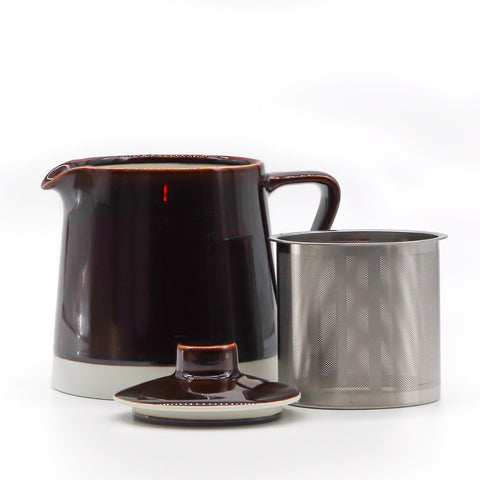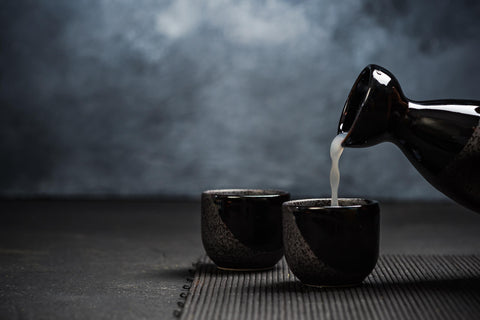
Ceramics is a catch-all term that refers to a range of hard, brittle, materials formed by firing non-organic and non-metallic materials, such as clay, at a high temperature. Ceramics are both heat and corrosion-resistant, making them ideal for making plates, bowls, cups, serving pots, and other forms of tableware. Popular forms of ceramic include earthenware, porcelain, stoneware, and bone china.
Japanese ceramics refers specifically to ceramics produced using traditional methods developed on the islands of Japan. Japanese ceramics are considered to be some of the best in the world, often being beautifully painted and glazed prior to firing.
History
The history of Japanese ceramics goes back more than 14000, to the neolithic Jōmon period, from which evidence of open-fired earthenware pots have been discovered by archaeologists. As time went by, improvements in pottery techniques began to develop, such as the closed kiln and the potter’s wheel. Imports of Chinese porcelain from the 9th century AD onwards proved to be a major influence on Japanese ceramics, leading to the development of new firing and glazing techniques to achieve similar effects.Varieties of Pottery
There are many varieties of pottery that are native to Japan. These are just a few of the most popular, that are still in production today.
Kiseto
Kiseto has a yellow colour, resulting from thin, raw clay being coated in a light ash glaze prior to baking. There are two types of Kiseto pottery. The first is thin, glazed, and well-baked, decorated with stamped or carved flower patterns, prior to firing. The other form of Kiseto uses a thicker clay, devoid of decoration, but incorporating a shiny gloss.
Setoguro
The Setoguro technique was developed during the Tensho period (1573-1592), which is why it is sometimes referred to as Tenshoguro. It uses an iron glaze baked at around 1200 degrees and then cooled rapidly to produce its distinctive, glossy black colour.
Shino
Shino (or shino ware) is a form of white pottery, deeply-coated with feldspathic glazes and baked at a high temperature. The clay has small holes in it that allow the natural scarlet colour to seep out during baking. Shino is a popular form of ceramic production, with many sub-varieties. These include Mujishino (just clay and glaze), Eshino (painted with iron oxide pigments), and Nezumishino (iron oxide is bound into the clay, then coated with a glaze).
Oribe
Oribe is recognisable for its distinctive green glaze, though some products use a different finish. These include Ao-Oribe, which is partly green-glazed and partly patterned with iron oxide pigments, finished with a white glaze. Oribeguro, is another popular variety, which uses black glazes.Types of Decoration
Japanese ceramics are beautiful to look at, thanks largely to the decoration techniques employed by their manufacturers. These are some of the more popular methods used.
Kannyu
This decoration technique creates fine cracks in the pottery during the glazing process. The cracks are made as the clay expands and shrinks during firing and cooling. Some manufacturers choose to emphasise the crack pattern by incorporate reds and blacks into the glaze.
Icchin
Icchin is performed by squeezing glaze out of a pipe, directly onto the pottery, in a manner not dissimilar to decorating a cake. This results in solid, three-dimensional patterns, allowing much variety in shading and texture.
Sometsuke
This involves drawing patterns on white clay using a pigment called gosu, which turns indigo during the baking process. This pigment is coated with a transparent glaze prior to firing.
Akae
Akae is unusual among decorating techniques, as it is performed on top of the ceramic glaze, after the item has been fired. Common colours used in this method include indigo, red, green, and yellow.Japanese Tableware
There are many types of Japanese tableware that you can purchase for your home or restaurant. Some of the most popular items include:
Rice Bowl (Ochawan or Chawan) – individual bowls for each person for holding riceSoup Bowl (Shiruwan or Owan) – while traditionally made of wood, many Japanese ceramic companies also manufacture these.
Medium Plate (Chu-zara) – a plate for your main dish, or used to serve smaller dishes
Small Plate (Ko-zara) – perfect for snacks, desserts, and side dishes
Tiny Plate (Mame-zara) – these are used for holding soy sauce, spices, condiments, or garnishes to be added at the table
Small Bowl (Kobachi) – used to hold sunomono (vinegared salad), nimono (simmered dish), or chinmi (special delicacies)
Chopstick Rest – used to keep your chopsticks off the table.
Rice/Noodle Bowl (Donburi) – a large bowl used for serving rice or udon noodle soup
Ramen Bowl (Ramen Bachi) – a large bowl used for ramen.
Soba Dipping Dish (Sobachoko) – used for soba dipping sauce and small dishes.
Steamed Cup (Mushi Wan) – designed for steaming, and comes with its own lid.
Teacup (Yunomi Jawan) and teapot – used for serving Japanese green tea
Popular Products
These are just some of the Japanese ceramics products and variations that prove particularly popular at SushiSushi. Click on a link to learn more, or visit our online store for more Japanese ceramics products.
Brown/White Dip Glaze Tea Or Coffee Pot
This is an individual tea or coffee pot, perfect for steeping a number of hot drinks. Its integrated strainer lid, ensures that no errant tea leaves or coffee grounds escape into the hot water.
Bowl, Blue - 15.5×7.7cm, 820ml (Showaseito)
This is a large, blue bowl with a ribbed texture on its outer side and a light speckle pattern, similar to egg shell. Capable of holding up to 820ml of liquid, it is perfect or serving ramen, or a wide variety of soups.
Kanekyu Seito Daruma Rice Bowl
Hand made in Gifu, Japan by Kanekyu Seito, these beautiful blue, white, and read, Daruma rice bowls form a welcome addition to any collection of Japanese tableware.
Our Suppliers
Here at SushiSushi, we source our Japanese ceramics from some of the most well-respected and established producers in Japan. These include:
Saikai
The Saikai Pottery Co. Ltd was established in 1946, named for the nearby Saikai Bridge which was being built at the same time. Founder Kaoru Kodama said he wanted the company to “be a bridge between people and things and enrich people's lives." He certainly lived up to that ideal, and Saiki now exports high quality Japanese ceramics around the world.
Showa-Seito
Showa-Seito was founded in 1927 and has been exporting Japanese ceramics around the world since the late 1930s. With factories in Japan and China, it is a large and well-respected manufacturer of beautiful tableware, popular across the globe.
Toki Minoyaki
Toki Minoyaki creates contemporary minoware using traditional techniques that date back 1400 years. This seamless blending of the old and the new results aesthetically pleasing tableware that would be at home in anybody’s collection.














